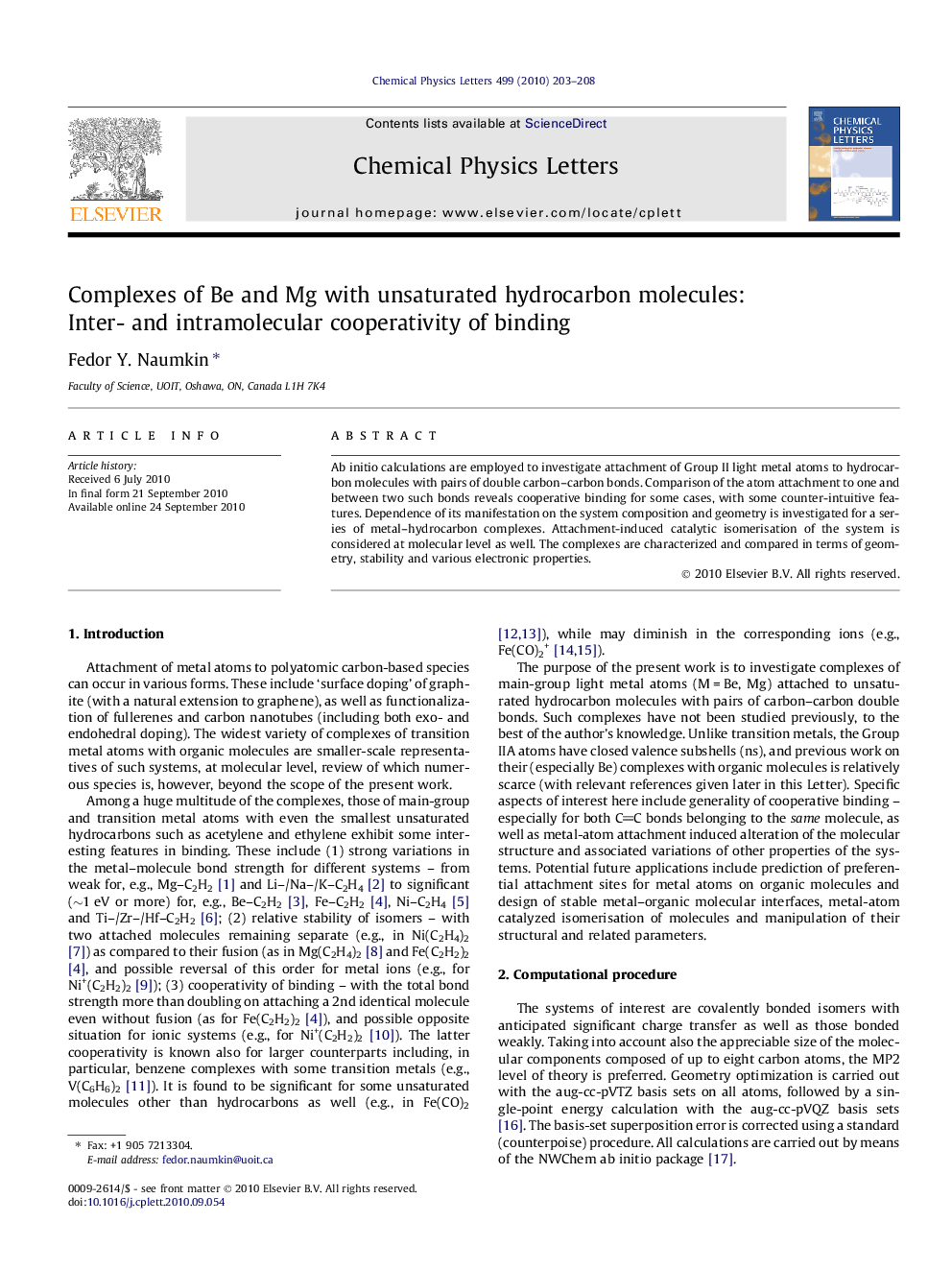| Article ID | Journal | Published Year | Pages | File Type |
|---|---|---|---|---|
| 5385041 | Chemical Physics Letters | 2010 | 6 Pages |
Ab initio calculations are employed to investigate attachment of Group II light metal atoms to hydrocarbon molecules with pairs of double carbon-carbon bonds. Comparison of the atom attachment to one and between two such bonds reveals cooperative binding for some cases, with some counter-intuitive features. Dependence of its manifestation on the system composition and geometry is investigated for a series of metal-hydrocarbon complexes. Attachment-induced catalytic isomerisation of the system is considered at molecular level as well. The complexes are characterized and compared in terms of geometry, stability and various electronic properties.
Graphical abstractMetal atoms attached between two carbon-carbon double bonds of hydrocarbon molecules can exhibit strong intra-molecular cooperativity of binding.Download high-res image (27KB)Download full-size imageResearch highlights⺠Light metal atoms can attach to one or between two CC bonds of hydrocarbons. ⺠Cooperativity of binding for the between-two-bonds case is observed. ⺠It is sensitive to the system geometry and composition and can be very strong. ⺠Cooperatively bound components distort more weakly and are farther apart. ⺠These features are found for two CC bonds in single or two separate molecules.
